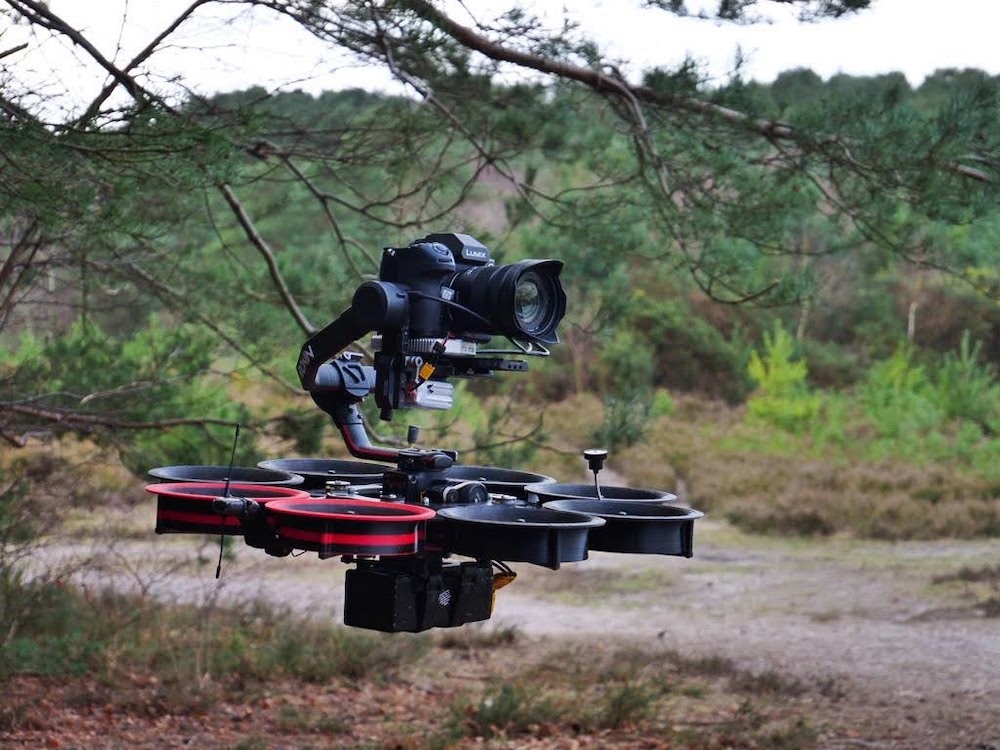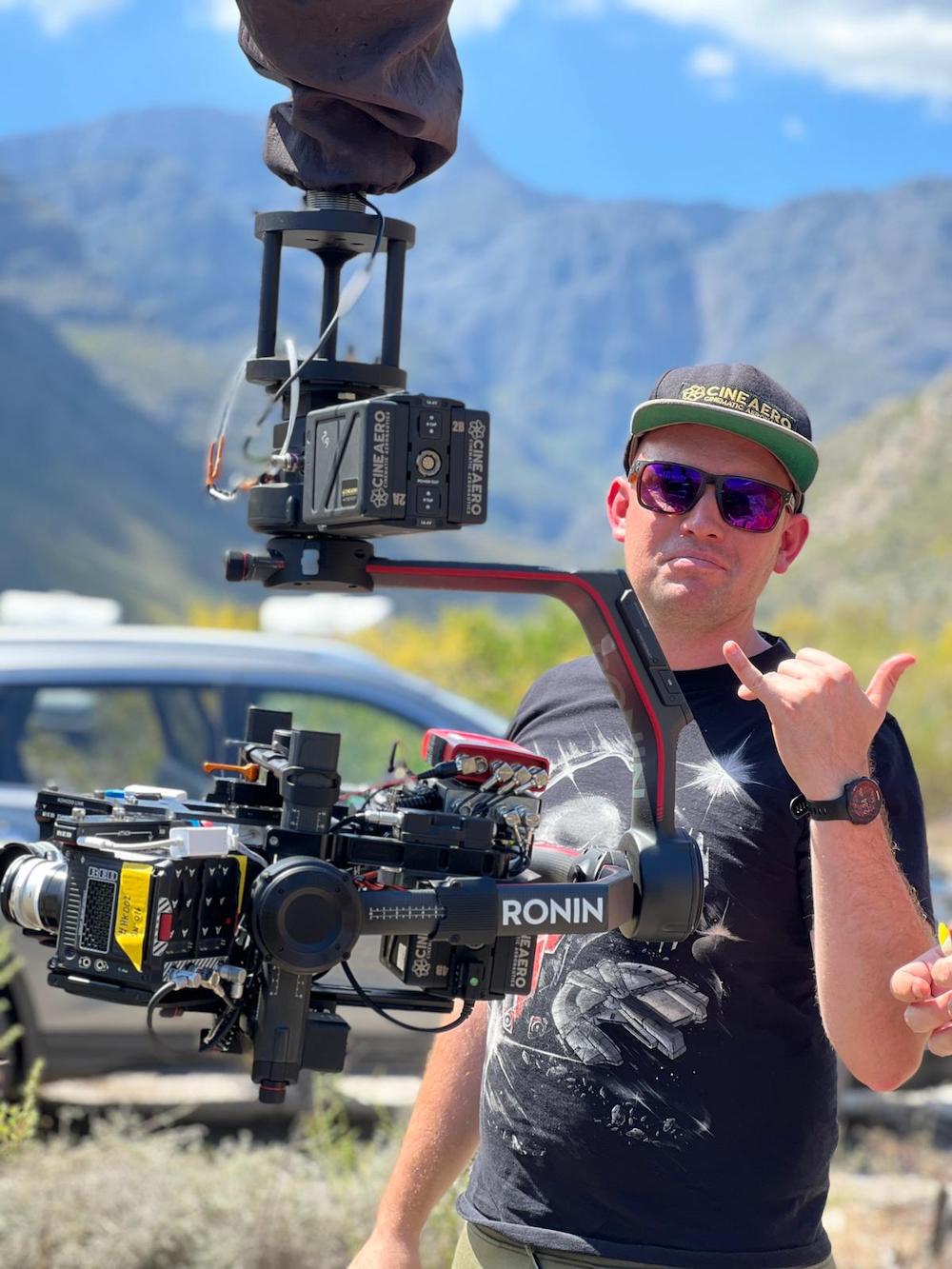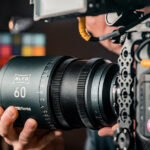
Dani Rose: Up in the air
Posted on Jul 30, 2023
Dani Rose started out in aerial cinematography ten years ago; now he’s working with some of the world’s biggest names
Advertisement feature
CINEAERO IS AN aerial filming company providing bespoke packages for big-budget Hollywood productions, despite being less than two years old.
Founder Dani Rose’s journey into the world of aerial cinematography dates back to 2010, when drones were still in their nascent years. As a pioneer in this field, he was among the initial few pilots to earn certification for operating drones and utilising their cinematic capabilities.
“I was one of the first people to get permission for aerial work,” he remarks. “When the first set of flight permits became available, my pilot ID number was 0124. If you did it now I think it’s around 25,000, which shows how far the industry’s come.”
Having started in ‘the early days’ of drones, he spent the first half of his career doing industrial inspection with
the technology. “I was working offshore, onshore, in industrial environments, dealing with fire, flares and power lines – all that dangerous stuff,” Rose explains.
While that work provided him with plenty of invaluable experience, he says he ‘was getting a bit too long in the tooth’ for the industrial scene. He then got the call to work on a film – and the rest, as they say, is history.
RISING STAR
Rose worked for an aerial filming company for a total of five years, learning plenty about working on film and high-end TV sets and independently developing his own knowledge and understanding of all elements of aerial filming – as well as researching and building new camera systems and drones that were world firsts for the industry. In 2021, he made the decision to start his own company, CineAero, and most recently established CineArray – “to be able to continue my passion for pushing the boundaries of filming technology.”
Since then, CineAero has moved up in the world, securing commissions to work on several huge films including the Fast & Furious series. In fact, it was for that franchise that the relatively new company ‘decided it was time to seriously branch out into the multicamera-array world’, so it ended up developing new multicamera systems specifically for drone use.
“Historically, arrays have been big, heavy and bulky – these aren’t suitable for aerial applications, particularly not for a drone,” Rose adds. “Knowing there was a demand for this, I built a new type of camera system comprising stripped-down, lightweight cameras and an umbilical system that separated the sensor and processor, which meant I now had a product that could be mounted on a drone without compromising resolution. Weight is always a factor for flying, so CineAero was also one of the first to develop a lightweight hybrid drone system, which could be flown on a standard aerial permit and was unique at the time.”
CineAero then worked with Chris Knight at KnightSky Aerials to develop the hybrid drone system, which Rose describes as a scaled-down platform built to achieve what other drones on the market could not.
Rather than something like the DJI Inspire, Rose wanted to create a mid-range set-up with more speed and control. From this, the hybrid platform was born. These are now a staple on high-end film sets and work alongside heavy-lift drones to cover all manner of shots.
Rose and his team have since worked on some huge productions, including the Mission: Impossible franchise.
“I worked on the sixth, seventh and eighth instalments and my requirements have evolved from just drone piloting to now designing and developing intricate, complex camera platforms for some of the stunts,” he enthuses. “It’s been a real honour to be part of such an iconic film series and to be trusted with creating bespoke camera systems for these incredible action sequences.”
For the most recent instalment of the action spy series, the team needed seven camera systems, seven camera bodies and all the accessories to go with them – within two weeks. Rose knew it was a tall order but was confident it could be done.
“I called CVP and placed the order just before we were about to head out to another country,” Rose recalls. “CVP only had two of the seven Red V-Raptor cameras in stock, but the team worked tirelessly to deliver the other five within the week. It was very much a last-minute request but was probably the most prominent one to ensure filming could start on time. Thanks to help from the team at CVP, I had everything I needed to be able to build the arrays and have them on set in the nick of time. We use CVP as our equipment supplier as no matter what our request or time frame, they always deliver – which is integral to our reactive industry.”
Mission accomplished.
BUILD YOUR PERFECT KIT
CVP is home to a full spectrum of production equipment that’s ready to see, combine and evaluate. Its creative and technical staff are committed to finding the right solution for every production need. To arrange an online demo, or book a one-to-one consultation, call 0208 380 7400 or visit cvp.com.
This article appears in the August 2023 issue of Definition. Read the full magazine here.










